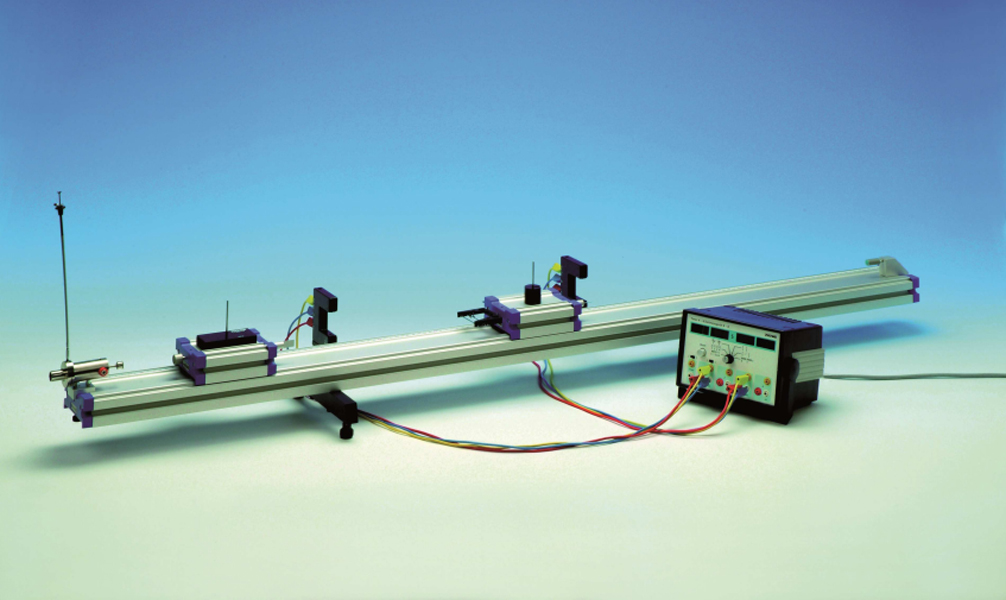Laws of collision/ demonstration track with a 4-4 timer

Principle
The volocities of two gliders, moving without friction on a demonstration track, are measured before and after collision, for both elastic and inelastic collision.
Benefits
- Accurate results due to measurements with low friction: cart with sapphire bearings
- Over the entire track length adjustable feet for a very simple alignment of the track even on small tables
- Extremely robust accessories, for example no overloading of carts due to elastic bearing of base plate, prevent unnecessary breakdowns
- Detailed, illustrated step-by-step manual
- Timer 4-4 can be used for almost every experimental requirement: distance-time law for four distances, measurement of speed at four positions, principles of collisions, measurement of the orbiting time of a rotary movement, the direct measurement of the duration of a complete swing of a mechanical pendulum and for short or long-term measurements with two 8-digit displays by connecting each of 2 timers
Tube with plug
Needle with plug
Fork with plug
Rubber bands for fork with plug, 10 pcs
Plate with plug
Magnet w.plug f.starter system
Light barrier, compact
Demonstration track, aluminium, 1.5 m
End holder for demonstration track
Cart, low friction sapphire bearings
Weight for low friction cart, 400 g
Holder for light barrier
Shutter plate for low friction cart, width: 100 mm
Starter system for demonstration track
PHYWE Timer 4-4
Portable Balance, OHAUS CS2000
Slotted weight, black, 10 g
Slotted weight, black, 50 g
Connecting cord, 32 A, 1000 mm, red
Connecting cord, 32 A, 1000 mm, yellow
Connecting cord, 32 A, 1000 mm, blue
Tasks
Elastic collision
- The impulses of the two gliders as well as their sum after the collision. For comparison the mean value of the impulses of the first glider is entered as a horizontal line in the graph.
- Their energies, in a manner analogous to Task 1.1.
- In accordance with the mean value of the measured impulse of the first glider before the collision, the theoretical values of the impulses for the two gliders are entered for a range of mass ratios from 0 to 3. For purposes of comparison the measuring points (see 1.1) are plotted in the graph.
- In accordance with the mean value of the measured energy of the first glider before the collision, the theoretical values of the energy after the collision are plotted analogously to Task 1.3. In the process, the measured values are compared with the theoretical curves.
Inelastic collision
- The impulse values are plotted as in Task 1.1.
- The energy values are plotted as in Task 1.2.
- The theoretical and measured impulse values are compared as in Task 1.3.
- As in Task 1.4, the theoretical and measured energy values are compared. In order to clearly illustrate the energy loss and its dependence on the mass ratios, the theoretical functions of the total energy of both gliders and the energy loss after the collision are plotted.
What you can learn about
- Conservation of momentum
- Conservation of energy
- Linear motion
- Velocity
- Elastic loss
- Elastic collision
